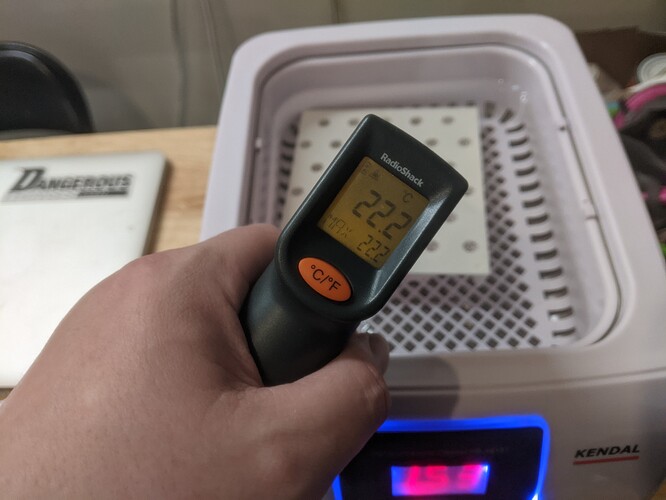Just ABS or is PETG or something else exceptable?
To big for any of my printers… and printing a large flat sheet of ABS sounds like a nightmare (for my hobbyist setup)…
Definitely in agreement with Nimus that ABS at that size really sucks. Not that it’s much use since I’m in Aus, but personally I can do up to 21cm x 25cm, which is a relatively ‘standard’ size.
What’s the smallest feature size? Common nozzle size is 0.4mm, whereas professional printing could be laser sintered with much higher resolution.
If it didn’t come from China, I’d almost suggest a CR-10 variant, since they can print very large pieces…
I could print it in PLA but the bed size on my ender 3 is really only good for 20cm X 20cm. I am in Texas though so shipping might be decent. It would also be in just black PLA as that is all I have.
I hate to point out the obvious, but it looks like a part you could make with traditional machining tools, 2 hours in the workwhop and $5 worth of supplies from Home Depot.
I’d love it if someone with machine shop tools and skill could hang out a few of these… I don’t have the kit or the skills ![]()
PETG might be possible… I’d have to check compatibility with the sterilization people…
I might have underestimated the 2 hours though: I didn’t see the many triangles on the sides. That looks like a lot of filing, particularly if the dimensional requirements are tight ![]()
But yeah, if you have files and a drill press, that’s all you need it would seem.
By the way, if you don’t want to do it or you don’t have the tools, hit your local community college and talk to one of the teachers. That’s usually a pretty good way of getting stuff machined on the cheap. It might not be an option with the virus this year though…
I could check the printers at RIT but we already went home for the winter break… Ill ask some buddies still on campus.
Those triangles were only there to reduce material use and also point out the direction of the sterilization pouches.
check out 3D Print Direct (no affiliation but we use them in work) high quality and i looked ~£200 each in 1 week turn around
Why not print the individual pockets and then install them in a large flat sheet of a similar material?
You could print the pockets with a 1/2" O.D. and a slightly larger lip to keep them from falling through, and then hand drill the sheet. Press fit, maybe? Don’t know if glue is an option with your plastics though. If not, maybe you could print some OD threads, and hand tap the holes? That seems a tad excessive, but it gives you some options.
EDIT.
Disregard. I was fresh awake when I wrote this and I thought you were referring to the little pockets that look like nets which you used in the chemical baths.
I know its a pain, but could it be broken down into 9? Or 6 and reduce the size slightly? There are quite a few printers which can do 20cm x 20cm, and not that many which can do over 25cm x 25cm
My printer can do it but I dont have abs on hand and it would take several days to get it, I do however have petg.
Ok I’m going to cut down the size of the tray even further to 20cm x 20cm and open up some options… I also think PETG should be ok as a material
If you do that, I’m up for printing if still needed (seems to be a lot of people with printers here). I should be able to do ABS as well, I’ve had decent success with prints with that large of a footprint. The previous size was too large for my printers, but 200mm by 200mm is fine. I can do PETG too, if that ends up working out as a material.
EDIT: forgot to mention, I’ve got some decent ABS I payed like a dollar a roll for a while back, if you end up editing the STL to the new size, I can try a test print or two. Not worried about the material cost in that aspect, the filament was nearly free for me. Could do one in PETG as well.
Tool making ![]()
![]()
This is the smaller tray
titan h2o2 processing tray 3.stl (768.0 KB)
but @Satur9 is working on a print solution… but if anyone wants to contribute a tray in ABS, I’d gladly take any offers. I think the trays will not likely survive many cycles in the chamber so I may burn through some of these and eventually probably need to go titanium of some kind.
Titan temp cycling and ultrasound salt bath treatment is still going strong.
After this I’ll do a Gauss check and then suspended chem baths… Titans go into test tubes with some gnarly chems and then the tubes get suspended in the ultrasound bath and we buzz 'em again.
Finally I’ll end with a vacuum chamber salt bath cycling test to see if there is any crack or break in the titanium shell. The vacuum cycling should, in theory, pull out any remaining air in the dead space between core and titanium, then re-pressurizing under salt water should push it right into the dead space and rapidly accelerate corrosion.
If, after all that, we maintain Gauss field strength… I’d say they are safe to ship.
We use Magnaflux to detect cracks in metal. There are cheaper systems based on the same fluorescent magnetic spray thing.
